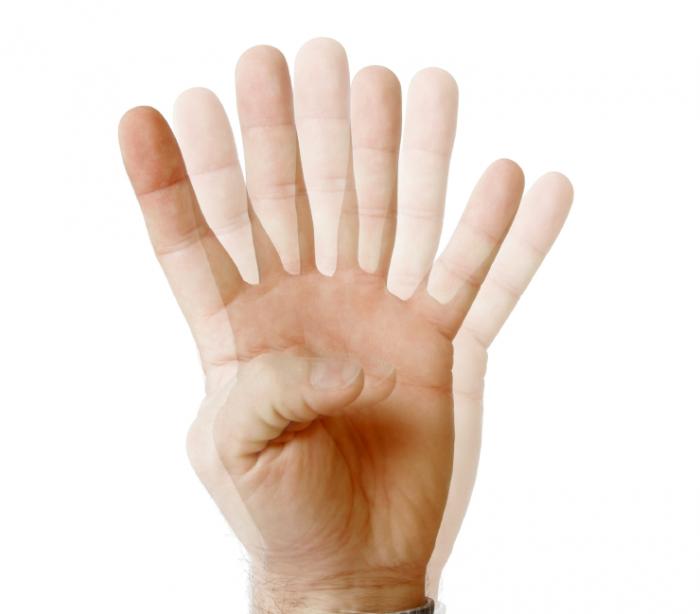


Double vision is when you see a double image instead of the single image you should be seeing. These images may appear next to each other or on top of each other. It can not only lead to obvious challenges navigating the world, but also negatively affect your reading ability, movement, and balance. When double vision affects one eye, it is monocular, while the term binocular indicates it affects both eyes.

The condition is when both of your eyes fail to work together. In most cases, those with binocular diplopia will have normal vision when they cover one of their eyes. The issues are due to the eyes pointing at slightly separate angles. This leads to them sending different images to the brain and since your brain sees two images that are too different to make a clear image out, you see the double images. The common causes include:
Some double vision is known as a squint or strabismus which is when the eyes point at different angles. This difference in angle is due to the muscles in the eyes being too strong, not able to move due to paralysis or weakness, or being prevented from moving by some sort of restriction.
Squints are especially common in younger children and won’t always lead to double vision. You may also develop a squint if you experienced one as a child. Sometimes, treating your squint via realigning the eyes actually leads to double vision since the brain may have ignored signals from one eye in a process known as suppression.
In addition to a childhood squint leading to your binocular double vision, there are multiple other conditions that may have caused it to develop suddenly. These conditions can affect the free movement of your eye, the nerves, the brain, or the muscles. They include:
Anytime you develop binocular double vision, you should visit your doctor as soon as you can, particularly if you’ve never had this problem before. The double vision may indicate serious medical conditions.
Remember that children can’t always explain what they are seeing, so bring your child to the doctor if you think he or she may have a squint or double vision. Some signs that your child might have double vision include squinting or narrowing their eyes frequently, commonly covering one of their eyes with a hand, turning their heads in odd ways, looking sideways as opposed to facing forwards, or looking between images. Most children will quickly learn suppression which is ignoring one of the images. If you don’t take care of the issue and suppression occurs, your child may permanently lose vision in the suppressed eye.
First you will need to discover whether you are experiencing monocular or binocular double vision. Your doctor will check this by having you cover each eye in turn. In the case of binocular diplopia without facial trauma, your doctor will consider whether neurological disorders, Graves’ disease, and/or diabetes are causing it.
Your doctor will need to figure out which of your eye muscles are affected by the binocular diplopia. This involves looking at your doctor’s finger as it is moved down, up, right, and left so your doctor sees how far the eye moves in every direction. He/she will also cover an eye and have you focus on a target before switching eyes. The eyes aren’t properly aligned if your eyes shift when the doctor moves the cover. The doctor may then repeat the test with prisms over the eyes as a way to shift the image and determine the extent of double vision.
Based on these tests, your other symptoms, and the medical history, your doctor will decide if you need extra tests. Depending on the suspected condition, you may need a CT scan, MRI, or blood tests.
In cases where the binocular double vision is due to a disease, treating that disease can improve your condition. Just some possible treatments include:
Prisms are wedge-shaped pieces of plastic or glass which bend light as it shines through. Fresnel prisms are a special type that treats double vision. They are thin and see-through, with one side sticking on the glasses’ lens and the other featuring special grooves that affect how light enters your eye. Prisms have adjustable strength and may need to be used for a few months.
Botox, botulinum toxin, can also be used to treat eye squints and other eye movement disorders. It will be injected into a muscle that controls eye movement and blocks chemical messages your nerves send, making your muscle relax. As the muscle can’t move your eye, other muscles will take over, straightening your eye. You may notice temporary side effects like worse double vision, droopy eyelids, or overcorrecting your eye position, but they should disappear.
In cases when double vision is due to a squint, surgery can help the eye position. It can move, strengthen, or weaken one of the six muscles that control your eye’s position. There are some risks, including making the double vision worse, requiring extra surgery, or damaging the eye, the last two of which are extremely rare.
Opaque intraocular lens is a type of surgery that is an option if other treatments fail. It only works with binocular double vision and involves taking the natural lens out of the eye, replacing it using an implant. Possible risks include a reduced visual field, the intraocular lens breaking following insertion, damage to your natural lens if not removed, or inability to examine the retina.